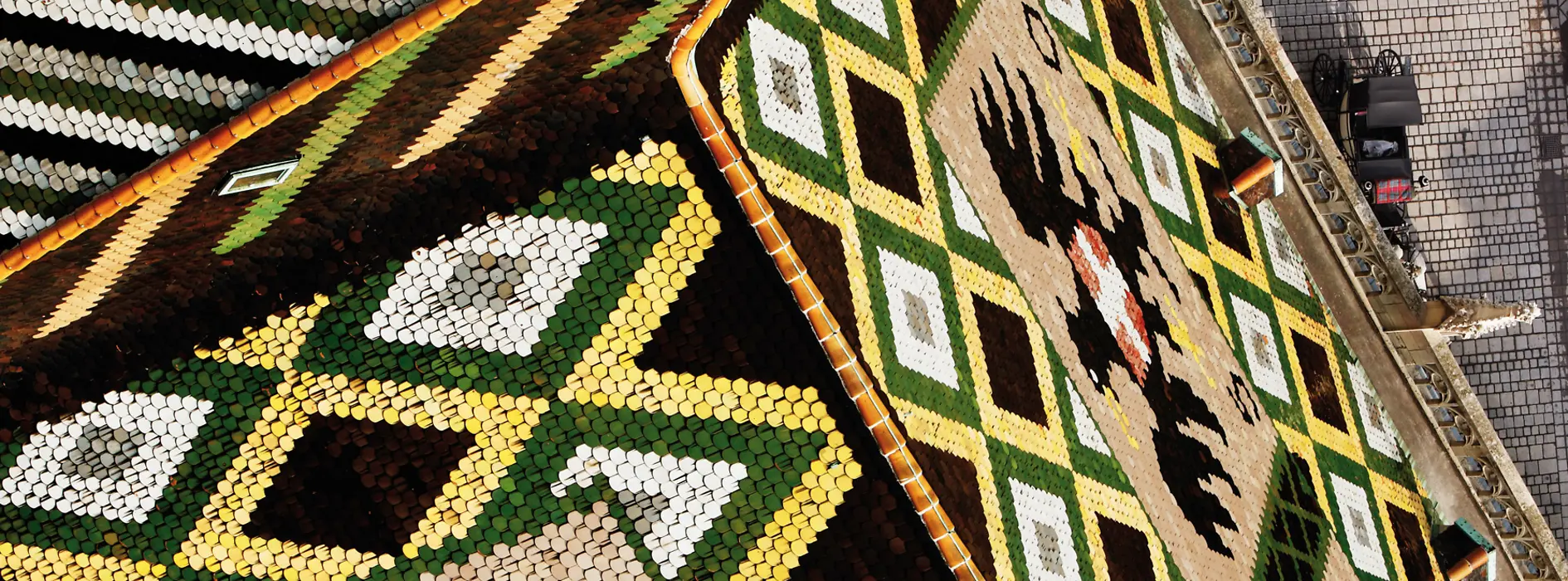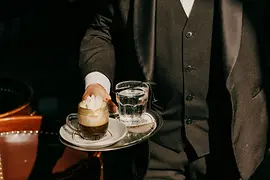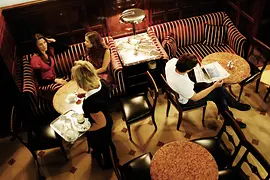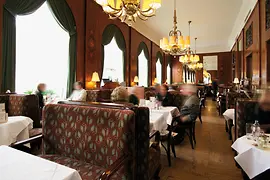Vienna Media News – September 2022 Ten Fun Facts About Viennese Coffeehouses
The Viennese coffeehouse is an institution. The German writer Bertolt Brecht summed it up perfectly when he said of Vienna: “The city is built around a few coffeehouses where the population sits together and reads papers.” There is a lot to be said about Viennese coffeehouses. And not everyone will be aware of the ten facts that follow.
1. Why Vienna’s coffeehouse culture was added to the UNESCO list of intangible cultural assets
A typical Viennese coffeehouse exudes a unique atmosphere with booths, bentwood Thonet chairs, marble and newspaper tables and coffee in all its rich variety from Melange (a shot of espresso “lengthened” slightly with hot water, topped up with hot milk and milk foam) to Einspänner (mokka in a glass, topped with whipped cream). Like Viennese Heuriger wine tavern culture, traditional Viennese coffeehouse culture now appears on the UNESCO list of intangible cultural assets. A central reason recorded in the official UNESCO report is that “the coffeehouses are a place where patrons consume time and space, but only the coffee appears on the bill.”
2. Why a Viennese coffee specialty goes by the name of Einspänner
This particular coffee specialty has its origins in a cart or carriage drawn by a single horse, known as an Einspänner or single-span. While the carriage driver holds their coffee, sitting on the box, they want it to stay warm for as long as possible. So to meet the brief, their mokka (double espresso) was covered with a large topping of whipped cream for insulation. Today, the Einspänner is also served in Vienna’s coffeehouses, in a stylish glass mug with a handle.
3. Why coffee comes with a glass of water in Vienna
Originally the glass of water was served to give patrons somewhere to put their spoon once they had finished stirring their coffee. Later it became a way for coffeehouse owners to show off the quality of the water used to make their coffee – something that took on added significance with the World Expo of 1873, which was staged in the same year that the First Vienna Mountain Spring Pipeline came online. Serving a glass of water with every cup of coffee was the cafe operators’ way of showing that their food and drinks were prepared using clean, crystal-clear mountain spring water. To this day, a glass of water is a seal of quality and the practice was then adopted in other countries.
4. When Vienna’s coffeehouses first entered the global conscience
It wasn’t just the extra glass of water that took off in other places due to the World Expo; countless visitors from all over the world had their first encounters with Viennese coffeehouse culture in 1873, too. The Viennese coffeehouse had its heyday at the end of the 19th century. People went to coffeehouses to read, play, set the world to rights, share philosophical ideas and to write.
5. The special thing about Café Landtmann
Café Landtmann opened on the Ringstrasse in 1873 – the same year that Vienna hosted the World Expo – which means that its 150th jubilee is coming up in 2023. The decision to open a coffeehouse at this location was a bold one. In 1873 it was surrounded by major building sites, with work on City Hall, the University and Parliament only just starting. Even so, Café Landtmann was a success from the word go. And at the turn of the century it celebrated the golden era of Viennese coffeehouses. Today, Café Landtmann, like Café Schwarzenberg, is just one of a handful of reminders of the original 27 legendary cafés that lined the Ringstrasse boulevard.
6. What’s the most unusual location for a coffeehouse
There is even a coffeehouse at one of Vienna’s cemeteries. While the Central Cemetery might seem like an unusual place for a café, it does go to show what an unusual relationship the Viennese have with the subject of death. Kur Konditorei Oberlaa is perfect for a rest after a walk around the sights at Central Cemetery – featuring treats from the famously delicious Oberlaa patisserie.
7. Which traditional Viennese coffeehouse has a disco ball suspended from the ceiling
In Vienna, a disco ball and traditional coffeehouse atmosphere don’t necessarily have to represent a jarring contradiction. And Café Schopenhauer in the 18th district shows how it’s done. This old suburban café has been lovingly and tastefully renovated, with the disco ball just one of numerous modern touches which also extend to the attractive bar. Famous throughout the city, the bridge, Tarock and chess parties still convene here to this day.
8. Which two coffeehouses both have the same name
Mix-ups happen all the time when two coffeehouses go by the same name. There are two Café Ritters in Vienna. One is on the Mariahilfer Strasse shopping street – exactly in the middle, so the perfect place to stop for a breather. Meanwhile, its namesake in Ottakring is an opulent gem set in the heart of a down-to-earth working class district. Both of these traditional Viennese coffeehouses are well worth a visit.
9. Where guests are never addressed directly
The artfully crafted display windows of former purveyor of confectionery to the royal court, Demel, continues to draw in patrons with some of the same cakes, pastries and candies that Empress Elisabeth held so dear. At Demel all of the servers and sales staff are women, continuing the 200-year tradition of the Demlerinnen and their black and white uniforms. And rather than addressing patrons directly, they still use an archaic majestic plural when talking to German speakers – something that Demel is uniquely famous for.
10. What guests sit on in Viennese coffeehouses
Thonet and the Viennese coffeehouse are inextricably linked. Thonet’s classic No. 14 design is feted as the quintessential Viennese coffeehouse chair. The backrest of the piece – first produced in 1859 – comprises just two curved pieces of wood and is a classic example of the work of bentwood specialists Thonet. Now produced as Number 214, the chair is among the most produced items of seating furniture in the world. Anyone interested in trying out one of these design icons for themselves will be able to satisfy their curiosity in lots of the capital’s coffeehouses. Including at Café Frauenhuber, which is among the oldest in Vienna. But modern cafés including Adlerhof are also devotees of the classic Viennese coffeehouse chair.
Addresses:
- Café Landtmann, Universitätsring 4, 1010 Vienna, www.landtmann.at
- Café Schwarzenberg, Kärntner Ring 17, 1010 Vienna, www.cafe-schwarzenberg.at
- Kurkonditorei Oberlaa am Zentralfriedhof, Simmeringer Hauptstrasse 232, 1110 Vienna, www.oberlaa-wien.at/standort-11/
- Café Schopenhauer, Staudgasse 1, 1180 Vienna, www.cafeschopenhauer.at
- Café Ritter, Mariahilfer Strasse 73, 1060 Vienna, www.caferitter.at
- Café Ritter, Ottakringer Strasse 117, 1160 Vienna, www.caferitterottakring.at
- Demel K. u. K. Hofzuckerbäcker, Kohlmarkt 14, 1010 Vienna, www.demel.com
- Café Frauenhuber, Himmelpfortgasse 6, 1010 Vienna, www.cafefrauenhuber.at
- Adlerhof, Burggasse 51, 1070 Vienna, www.adlerhof.wien
Contact
Helena Steinhart
Media Relations
+43 1 211 14-364
helena.steinhart@vienna.info






